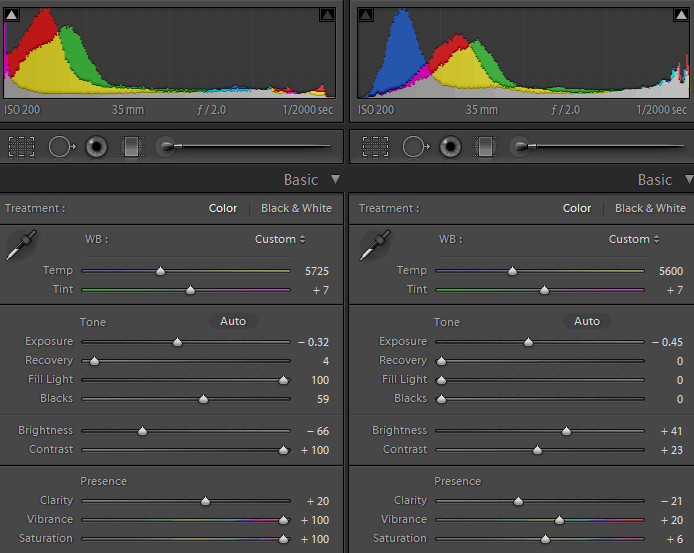MAXIMIZING COLOR SATURATION
DEFINITION
I love color. I love to increase color saturation. Increasing the color can add depth to an image, make it more dramatic, or make it stand out! Like all post processing effects, it can have side-effects. Understanding white balance is first and foremost.
Incorrect white balance will create color errors. Always take images in RAW. RAW, unlike JPEG, allows for white balance to be adjusted afterwards without degrading image quality. Sometimes white balance cannot be corrected depending on the lighting of an image. Read my white balance section to see how to ensure proper white balance.
Once the white balance is set correctly, increasing color saturation is easy. Software tools like Adobe Lightroom or Photoshop provide easy adjustments to increase color saturation. Additionally, they provide the ability to increase vibrance. Vibrance differs from saturation. Adjusting vibrance varies blue and green tones more. Vibrance enhances color that is already saturated. Although vibrance is important, color saturation is more important and should often be increased first, before adjusting vibrance.
EXAMPLE
Lastly, increasing color saturation can over expose an image. Usually it will over expose a specific color. It is important to reduce contrast by increasing fill light or reducing contrast. Also decrease brightness and exposure. Full frame cameras have a huge advantage as they have little noise increase when increasing fill light.

FIGURE 1: COLOR SATURATION EXAMPLE

FIGURE 2: LIGHTROOM SETTINGS
RELATED ARTICLES
White Balance | Lenses | MTF